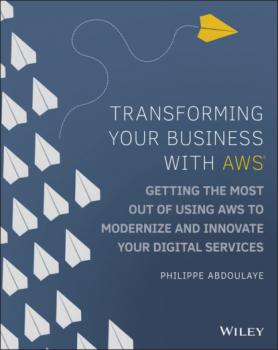John Wiley & Sons Limited
Все книги издательства John Wiley & Sons LimitedComputation in BioInformatics
COMPUTATION IN BIOINFORMATICS Bioinformatics is a platform between the biology and information technology and this book provides readers with an understanding of the use of bioinformatics tools in new drug design. The discovery of new solutions to pandemics is facilitated through the use of promising bioinformatics techniques and integrated approaches. This book covers a broad spectrum of the bioinformatics field, starting with the basic principles, concepts, and application areas. Also covered is the role of bioinformatics in drug design and discovery, including aspects of molecular modeling. Some of the chapters provide detailed information on bioinformatics related topics, such as silicon design, protein modeling, DNA microarray analysis, DNA-RNA barcoding, and gene sequencing, all of which are currently needed in the industry. Also included are specialized topics, such as bioinformatics in cancer detection, genomics, and proteomics. Moreover, a few chapters explain highly advanced topics, like machine learning and covalent approaches to drug design and discovery, all of which are significant in pharma and biotech research and development. Audience Researchers and engineers in computation biology, information technology, bioinformatics, drug design, biotechnology, pharmaceutical sciences.
The Unintended Consequences of Technology
Discover the technologies and trends that threaten humanity and our planet– and how we can rein them back in, together In The Unintended Consequences of Technology: Solutions, Breakthroughs and the Restart We Need , accomplished tech entrepreneur Chris Ategeka delivers an insightful and eye-opening exploration of the challenges and the opportunities at the intersection of technology, society and our planet. Detailing both positive and negative technology use cases that on one hand have made humanity better, but on the other hand pose a serious threat to individuals and groups across the world, the author demonstrates how to avoid allowing powerful technologies to overcome our better natures. In this book, you'll: Discover how the forces of capitalism, greed and the myths that surround meritocracy when combined with exponential technology pose an existential risk for humanity. Explore the many exponential technologies such as gene editing, 5G, behavior modification, cyberspace… that have lots of promise but also uncertainty. Consider the future of humanity we wish to collectively build, and whether we can rebuild a capacity for empathy at scale in our tech tools Perfect for founders, business leaders, executives, managers, Chief Technology Officers, and anyone else [i.e. all human beings] responsible for the use and proliferation of advanced technologies. The Unintended Consequences of Technology is a thought-provoking, must-read resource for those at the forefront of our new technological reality.
Handbook of MRI Technique
HANDBOOK OF MRI TECHNIQUE FIFTH EDITION Distinguished educator Catherine Westbrook delivers a comprehensive and intuitive resource for radiologic technologists in this newly revised Fifth Edition of the Handbook of MRI Technique. With a heavy emphasis on protocol optimisation and patient care, the book guides the uninitiated through scanning techniques and assists more experienced technologists with image quality improvement. The new edition includes up-to-date scanning techniques and an additional chapter on paediatric imaging. The latest regulations on MRI safety are referenced and there are expanded sections on slice prescription criteria. The book also includes the contributions of several clinical experts, walking readers through key theoretical concepts, discussing practical tips on cardiac gating, equipment use, patient care, MRI safety, and contrast media. Step-by-step instruction is provided on scanning each anatomical area, complete with patient positioning and image quality optimisation techniques. The book includes: A thorough introduction to the concepts of parameters and trade-offs, as well as pulse sequences, flow phenomena, and artefacts Comprehensive explorations of cardiac gating and respiratory compensation techniques, patient care and safety, contrast agents, and slice prescription criteria Practical discussions of a wide variety of examination areas, including the head and neck, spine, chest, abdomen, pelvis, the upper and lower limbs, and paediatric imaging A companion website with self-assessment questions and image flashcards Perfect for radiography students and newly qualified practitioners, as well as practitioners preparing for MRI-based certification and examination, the Handbook of MRI Technique will also prove to be an invaluable addition to the libraries of students in biomedical engineering technology and radiology residents.
Lean Six Sigma For Dummies
Become a process improvement star with Lean Six Sigma! Thinking Lean? Not in terms of weight loss, but operational efficiency? Then you can get into the Lean mindset with Lean Six Sigma For Dummies . A popular process improvement strategy used in many corporations, Lean Six Sigma exemplifies eliminating waste and optimizing flow at an operational level. With the strategies outlined in this book, you’ll have your projects, team, and maybe even your organization running at peak efficiency. Written by two experts that have been teaching Lean Six Sigma for over 20 years, Lean Six Sigma For Dummies explains the jargon surrounding this organizational practice, outlines the key principles of both Lean thinking and the Six Sigma process, and breaks it all down into easy-to-follow steps. Use Lean Six Sigma to develop a culture of continuous improvement Complete repetitive tasks through robotic process automation Assess how well your company and employees adapt to Lean Six Sigma Discover tips on how to implement Lean Six Sigma every day Find best practices to sustain ongoing improvements With handy checklists and helpful advice, Lean Six Sigma For Dummies shows you how to implement Lean Six Sigma in any industry, within any size organization. Pick up your copy to successfully lean into the Lean Six Sigma mindset yourself.









